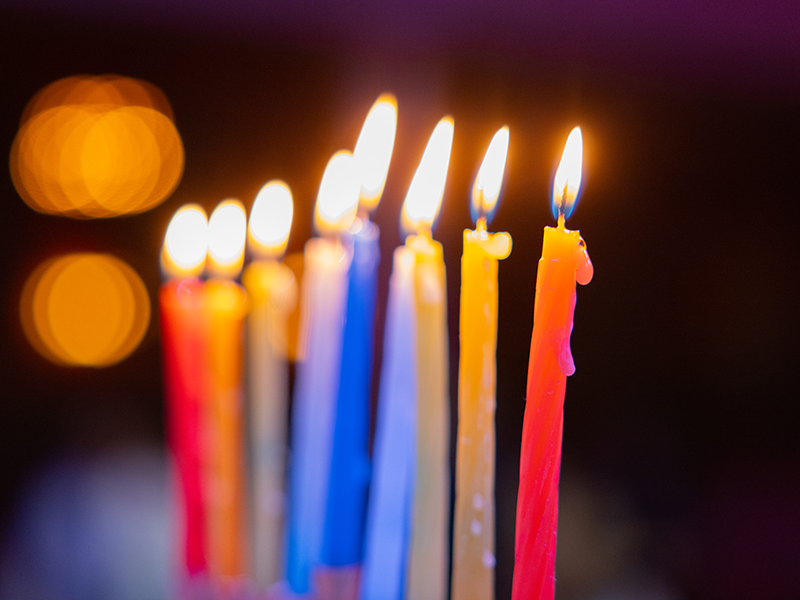This week, the hustle, bustle, pomp, and circumstance of Rosh HaShanah and Yom Kippur give way to the joyful festival of Sukkot. We get out of our sturdy synagogues with their rows of chairs and gather in flimsy, temporary huts to celebrate the harvest and remember the journey of our ancestors through the wilderness. Sukkot is a weeklong holiday, and the days in the middle are called “Chol HaMoed”— the “ordinary” days of the “sacred time” — and my family loves spending as much time as possible hanging out in our sukkah, sometimes finding the sacred in the ordinary.
Sukkot is also one of Jewish tradition’s pilgrimage holidays. When the Temple stood in Jerusalem, it was a time for folks to go up to celebrate together and to make special offerings. In our Jerusalem apartment building, for the second year in a row, the start of Sukkot is marked by a different sort of pilgrimage. We trudge down into our miklat — the sturdy, concrete bomb shelter underneath our building — and then back up the same three flights of stairs, hauling our mattresses up to the sukkah.
Since shortly after October 7, 2023, with the exception of their Sukkot pilgrimages, these mattresses have stayed in our miklat, providing us with a modicum of comfort on those nights when we have slept under the threat of incoming rockets. On shorter trips to the shelter, or when warning sirens sound during the day, the mattresses are there for our young children to bounce on while we wait for the all-clear signal. I am grateful to have them. And I am always conscious of those in other parts of Israel who have had to run to shelter much more frequently than we have in Jerusalem, as well as those in both Israel and Gaza with no shelter to run to, never mind one equipped with this small comfort.
For Sukkot, we lug our mattresses up to our balcony so our children can sleep in the open air under our windswept sukkah with its strange mixture of vulnerable exposure and deep joy. For the second year in a row, our mattresses embody a profound paradox: they are our place of refuge in a time of fear, and now they are our place of rest in a time of celebration.
I see in them a central tension of Sukkot itself. The miklat is a place of forced refuge — a sturdy, unyielding shelter meant to protect us from harm. It is a necessary place and a place of fear. The sukkah, by contrast, is a place of chosen vulnerability, its flimsy roof and barely-there walls a deliberate invitation to expose ourselves to the world. This is a much different form of security, and an admittedly privileged one: trusting that we live our lives most fully when we practice being in the present with ourselves and with one another. Our sukkah shelters us from complacency, from indifference, and from forgetting what matters most.
This tension between the flimsy and the sturdy, between openness and protection, is also ever-present in our relationship with ourselves, especially our bodies. We are often told to build up walls and find a sturdy shelter in our minds to protect ourselves from a world that judges our bodies. We are taught to fear our own shape and size, to constantly wall ourselves in, seeking to be smaller. But our tradition invites us to do something different. It invites us to be vulnerable in our bodies and celebrate them in their current form, just as we celebrate the temporary and imperfect sukkah.
This Sukkot, may we practice unlearning lifetimes of body shame to find the everyday holiness in our own physical forms. May we honor the ways that our bodies change all the time, just like our sukkot—through our own choices of adornment or reinforcement, and through changes we are powerless to influence. May we honor these marks of humanity in every person.
More than anything, this Sukkot, I am hoping beyond hope for a true and sturdy peace that allows us to keep our mattresses out of our bomb shelter for a long, long time.
Explore Jewish Life and Get Inspired
Subscribe for Emails

